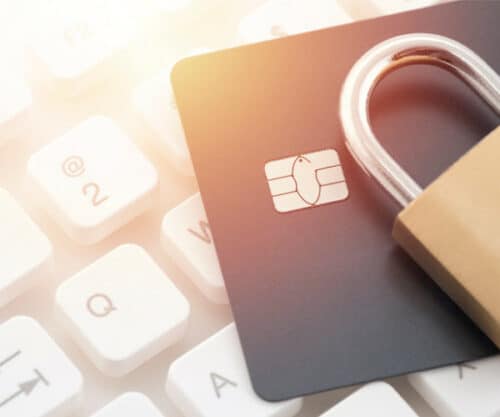Debit Card for Kids: 9 Top Picks and Tricks

In an increasingly digital world, a debit card for kids is becoming more and more valuable. A debit card can provide numerous money lessons on how to invest and manage withdrawals, account balances, and savings.
About 40% of teenagers between the ages of 13 to 17 have their own debit card since giving them cash isn’t practical. The number of kids and teens shopping online continues to grow, and a debit card offers them financial freedom without the risks of credit cards. In the best-case scenarios, they’re a great tool parents can use to teach kids how to use virtual money wisely.
What Is a Debit Card For?
A debit card is essentially a digital version of the good, old-fashioned checkbook. It is a physical card that lets you spend money directly from your checking account by linking to your bank account number. The charge is immediately visible when you make purchases or transfer money. This differs from a credit card, where purchases are not made on your money but rather on credit.
A debit card can be used for everything from setting up a high-yield savings account to making simple cash withdrawals for purchases such as groceries. Many banks also have a rewards program for using a debit card. In addition, debit cards typically have a PIN code that adds an extra level of security. Overall, debit cards are great budgeting tools that can be useful in reaching savings goals.

Can I Get a Debit Card for My Child?
Yes! Many companies offer debit card programs for kids with age limits ranging from 6 to 13 years old. Some don’t even have an age limit. These accounts allow parents to deposit kids’ allowances into their debit accounts. When looking for debit cards, look for a debit card with parental control. Most card companies offer this type of safeguard, including fund protection, location sharing, and text message alerts.
While debit cards can provide a wonderful financial education, they also pose some risks. Banks and financial organizations may sell your child’s personal information to third parties. Kids (and adults) can often lose their cards or have them hacked, so a debit card for kids could make your family more vulnerable to theft, hacking, or fraud. Establishing guidelines around how and where to use the card might help avoid some of these challenges. Banks and card companies also have insurance to protect you from these pitfalls.
Despite the risks, debit cards provide a practical way to teach your kids about financial management and offer you the opportunity to prepare for your child’s future. Many of the debit card risks could also be considered educational benefits. It’s a lot easier to learn basic financial lessons or deal with someone hacking your debit card when you’re 14 and still living with your parents than when you’re on your own and dealing with more material amounts of money.
Fortunately, we’ve already researched some of the best and safest debit cards for your kid. Here are our top picks!

What Is the Best Debit Card for Kids?
When embarking on money missions with your children, there are a few critical factors to consider. Ultimately, kids debit cards should increase financial literacy and give them more flexibility in spending their pocket money.
The first consideration is purchase protection. For example, if your kid makes a purchase and the item never arrives or arrives damaged, you want a card provider to cover the cost. Another critical consideration is overdraft fees. If your kid buys an item(s) that costs more than what is in their account, the card provider will cover the difference that must be repaid along with a fee. Both parents and kids should be aware of overdraft fees.
Real-time spending notifications are essential for parents to help kids keep track of their savings plans. While there are no spending limits on a debit card, there are limits on how much money you can deposit into your kid’s account. Be sure to check with the provider to determine those limits.
Finally, depending on your and your kid’s banking needs, savings interest could be an important consideration. For example, if your intentions are to set up a college savings account for your kids, the interest that can accumulate would be a necessary consideration. Banks pay interest to you for holding your money with the bank.
Let your child participate in the selection process with you so they can understand the process and learn some financial jargon. Furthermore, some companies allow parents to set up parent-paid interest. Essentially, parent-paid interest allows you to set an interest rate on whatever your kid saves. Encouraging financially wise saving habits. Choosing a debit card is a part of the educational process of giving your kids this responsibility.
Below are some of the most popular debit cards for kids and teens.

Greenlight Debit Card for Kids
- Minimum Age: None.
- Monthly Fees: $4.99 to $9.98
- ATM Fee: None.
Greenlight is a good card for kids and teens of all ages because it allows parents to tie allowances to chores and set up a direct deposit. The card is also suitable for teaching kids about savings goals because Greenlight will enable users to earn up to 5% on savings accounts. Furthermore, Greenlight gives kids 1% cash back on purchases, which goes to their savings accounts. There is also a Level Up feature that uses games to teach money skills to children.
Greenlight is hard to beat when it comes to investing because it allows parents and kids to research stocks and ETFs to learn how to build wealth. But it’s worth noting that the company has had some past issues regarding privacy. In a previous privacy disclosure, Greenlight reserved the right to share personal information. Since then, Greenlight has edited its privacy disclosure, restricting its rights to share your personal information.
BusyKid Visa Spend Card (Prepaid Debit Card)
- Minimum Age: None.
- Monthly Fees: $4.00
- ATM Fee: $1.50
BusyKid is the most affordable kids’ debit card on the list (excluding any free debit card for kids). The card also allows parents to teach their kids many financial lessons. Children have the option of keeping cash in a savings or checking account. They can also invest their allowance in stocks or donate it to one of 60 national charities partnered with BusyKid. There is a fair share of parental controls on BusyKid, with parents able to lock the savings, share, and spending accounts to encourage financial responsibility. Finally, BusyKid is FDIC-ensured and provides high levels of protection to your kid’s financial accounts.
GoHenry
- Minimum Age: 6
- Monthly Fees: $4.99
- ATM Fee: $1.50
GoHenry is known for its personalized cards and customizable tasks. For example, parents can create chores and savings goals in a GoHenry account to help their children take on more household responsibilities and reward them for a job well done. Security is also a significant benefit of GoHenry. The company has a policy that ensures that your and your kids’ personal information is not sold to third parties without permission. As a result, this is an excellent card for teens and kids above the age of 5.
Step
- Minimum Age: None.
- Monthly Fees: None.
- ATM Fee: None.
While Step has no minimum age to sign up, the platform is best suited to children over 12 who are ready to go to the next level of financial knowledge. Step draws on deposited funds like the other debit cards on this list. However, the card processes purchases on credit, like credit cards, allowing your kids to safely build a credit score without worrying about overdraft fees and compound interest.
Step’s privacy policy is vague and states that it shares your information, just not for its own marketing purposes. Nonetheless, you can opt out of sharing your child’s data by calling the company directly.

Axos Bank First Checking
- Minimum Age: 13 years old
- Monthly Fees: None.
- ATM Fee: None.
Axos First Checking offers one of the best debit cards for teenagers because it is designed specifically for them. While the card does share your teen’s personal information with financial companies, you can opt out of targeted ads. The free card and app teach teens how to use a checking account and allow them to directly transfer money to their friends through a teen checking account. In addition, there is a 0.01% APY (annual percentage yield). An APY is the growth earned on compound interest that the bank pays after one year.
Chime
- Minimum Age: 18 years old
- Monthly Fees: None.
- ATM Fee: None.
The Chime card for kids is an adult card that some consider the best debit card for teens once they turn 18. However, Chime is included because the company is an excellent complimentary resource for any card on the list. The website features many easy-to-read articles on financial topics such as financial security, the basics of banking, and how to be smart with your money.
Pro Tip: A part of the deal for getting your child a debit card can be to require them to read one article from Chime a week, a month, etc.
Copper Debit Card
- Minimum Age: None.
- Monthly Fees: None.
- ATM Fee: None.
The Copper debit card offers kids an entire financial literacy course and the ability to make purchases and invest in stocks. Its financial literacy course consists of hundreds of articles and a financial quiz that allows kids to learn real-life financial skills to help them build long-term wealth. The app also gives parents instant funding capabilities and the ability to fully view their kid’s accounts. While Copper is encrypted, the company does share personal information with its business partners.
Famzoo Prepaid Debit Card
- Minimum Age: None.
- Monthly Fees: $5.99
- ATM Fee: None.
FamZoo’s prepaid debit card for kids includes an educational component in addition to the card. The company has unique features, including child loan tracking, reimbursement requests, and parent-paid compound interest. FamZoo also allows kids to set up subaccounts that resemble a portfolio, allocating every dollar they receive to a specific purpose. The company does charge a monthly fee of $5.99, so be sure to factor that into your accounting. One of our favorite FamZoo features is that it doesn’t share your personal information with third parties for any reason other than their own platform functions, such as sending email updates and processing payments.

Chase First Banking
- Minimum Age: 6
- Monthly Fees: None.
- ATM Fee: None.
Chase First Banking is the Chase debit card for kids and teens. There are no monthly fees with the account. Chase also allows parents to manage where and how much money their child can spend. Children and parents can also use Zelle to make deposits. Recurring allowances can be set up through the app, along with one-time payments. The account also allows parents and kids to create savings goals. However, Chase does share your and your kid’s personal information with their business affiliates for marketing and everyday business operations purposes.
Is a Debit Card Safe for My Child?
Before handing a debit card to kids and teens over, it is essential to have an in-depth conversation about how debit cards work, the benefits, and the risks. Furthermore, establishing clear lines of communication with your child is important. Most prepaid debit cards include a locking option if the card is lost or stolen, but you can only take the appropriate measures through your child.
Remind them to keep their card safe, not to divulge their password or PIN to anybody, and not to make transactions on an unprotected Wi-Fi network. They must notify you immediately if they believe their card has been hacked. Some cardholders will also allow parents to block the card from being used at specific locations or sites.

How Would I Know if My Child’s Personal Data Has Been Breached?
Minors are targets for identity theft because parents only notice a problem once their child starts working and submitting tax returns. However, common indicators of identity theft include debt collection calls, invoices, or credit card applications in your child’s name.
While most debit cards for kids only gather the custodial account holder’s SSN, it’s still a good idea to keep an eye out for these indicators of child identity theft.
Live Long and Prosper
Debit cards for kids are great tools to help teach financial literacy and responsibility. Discussing the risks and benefits of the card and keeping an eye out for indicators of identity theft are part of those valuable financial lessons. There are many excellent card options that can ensure you’re setting your child up to enjoy a financially secure future.
Do you have any experience with debit cards for kids? Let us know your opinions on social #getfamilyapp.





